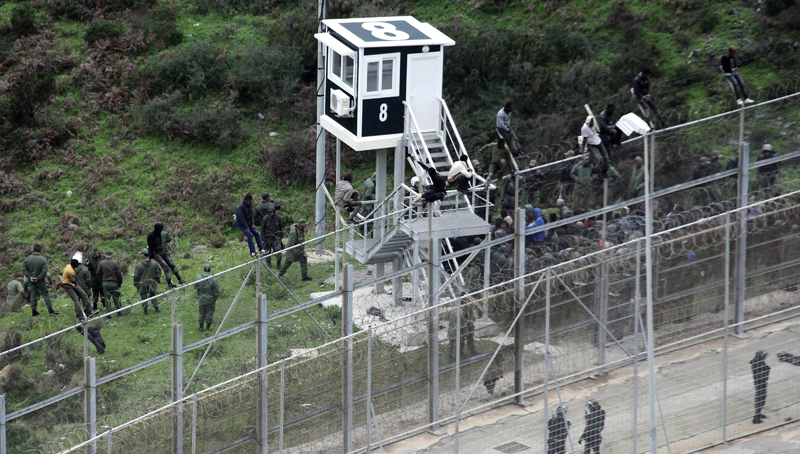ENOUGH IS ENOUGH
After being opened for a few months, Europe closed its borders in March 2016 again, leaving thousands of refugees trapped in Greece, where most of them continue to live under poor conditions. Although many refugees have to live in tents in the cold winter, Germany and other EU member states want to start deporting refugees back to Greece starting in March 2017. While some activists try to support refugees in Greece by delivering aid, others try to support refugees by helping them cross the border.
 Image: Refugee detention camp Moria at Lesvos, Greece
Image: Refugee detention camp Moria at Lesvos, Greece
Written by Riot Turtle
I have been working with refugees in Greece regularly for about a year now (and before that I worked with refugees in Germany, Austria, Slovenia, Croatia and Serbia) and it was a pretty tough job. I met a lot of great people, but the border regime and the way people are treated in most European countries is totally unacceptable. I remember being in the Idomeni refugee camp as the EU-Turkey deal was implemented. I drunk a cup of tea that morning with a friend from Palmyra (Syria) and he told me he was scared that one day the EU might extend the deal, and could start sending back people who where already in Greece before the deal was implemented. I looked in his eyes and I saw the fear. The fear I saw so many times before and since I started working on the Balkan route.
 Image: Refugees trying to keep warm in Thessaloniki, Greece.
Image: Refugees trying to keep warm in Thessaloniki, Greece.
That is the hardest part about working with refugees – watching the way politicians treat people. The shame and anger about the refugee policies of EU member states makes it a tough job; the drownings at sea, the militarisation of the border regimes in many EU countries, the misery people have to live in, the export of arms by EU corporations (backed by EU governments), trade treaties that makes life economically unviable in many countries outside Europe. EU policies are an act of structural violence against millions of people.
EU policies makes my work with Cars of Hope for and with refugees into a balancing act. As an activist, I decided to support refugees in Greece and other European countries. This work takes all of my time, which means I don’t have a lot of time left to fight against the increasing number of deportations of refugees from Germany or to fight against the border regimes of many other European countries. The things I do the most involve organising aid missions for our work with refugees in Greece. Collect money, organize infrastructure, find out whats needed most at the moment, and then a Cars of Hope group will travel to Greece or somewhere else. Last but not least of course the work on the ground along the Balkan route: buying and distributing food, sanitary products and other things that are needed. We do what we can but its still not enough. The circumstances in which people have to live in are inhumane, and there are so many of them who are forced to live under these conditions.
Two videos about our work on the Balkan route in 2015 (Film from January 2016):



